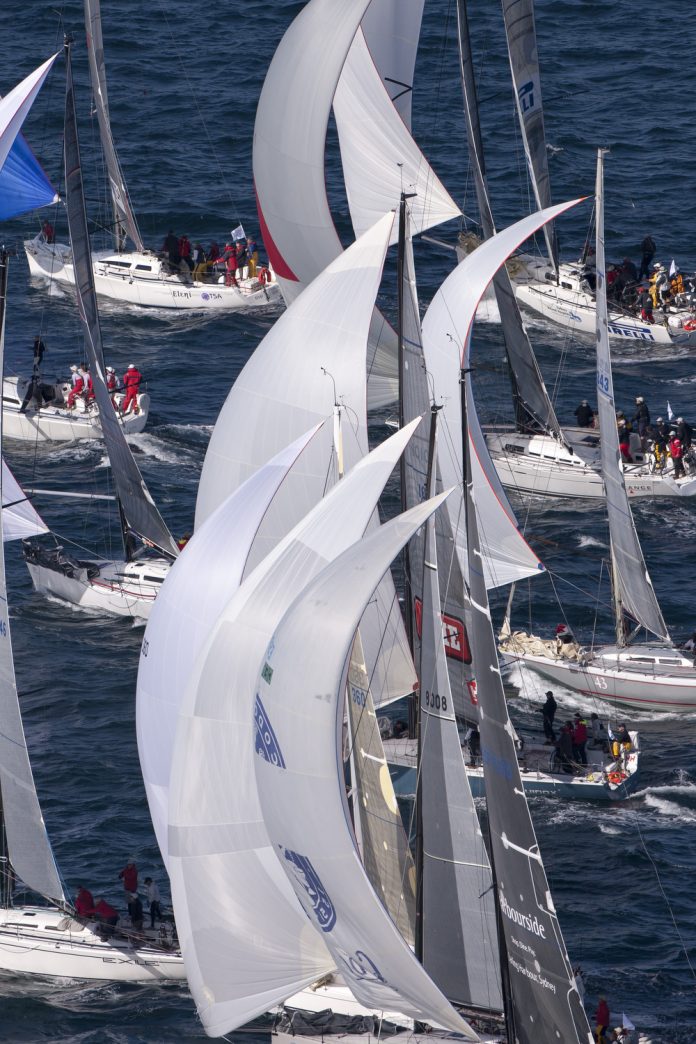

Andrea Francolini
How to Minimize Your Racing Risk – Dave Dellenbaugh wrote the following 13 points, and he is one of America’s and Sailing’s most accomplished sailors and coaches.
Dave’s newsletters and details can be found at Dave Dellenbaughs Speed and Smarts
Don’t take unnecessary chances! If you want to finish consistently near the top of the fleet, you must follow a conservative game plan.
Below are 13 ideas on how to minimize risk around the race course. If you implement as many of these as possible, your finishes should be more consistently near the top of the fleet.
Learn the racing rules.
Knowing the rules is the best way to avoid breaking any rule. So spend some time looking at the rulebook on a regular basis.
Besides reducing your risk, it will put you in a much stronger position tactically and help you stay in control of your race. (Don’t forget your class rules, too.)
Study the notice of race and sailing instructions.
If you really want to minimize risk-taking, don’t ever sail a race without reading all the regatta rules first. This is an easy, foolproof way to avoid the kind of embarrassing mistakes that can cost you a regatta.
Work hard on boat speed.
Improving your boat speed is hard work, but it can give you a huge return with no risk at all.
In addition, good boat speed will help you recover from mistakes. It lets you take slightly bigger risks (in search of slightly bigger rewards) while reducing your downside.
FREE CHAMPIONSHIP SAILING GLOVES
Practice boat handling maneuvers, especially in heavy air.
When you’re racing, there is always at least a small risk whenever you perform a maneuver (e.g. heavy-air jibes).
To minimize this risk, practice as much as possible, especially in stronger winds, and try to avoid high-risk maneuvers while racing.
Check over your boat and gear.
Another easy way to lose a race or regatta is by having something break. Therefore, if you want to reduce your risk, be sure to check your boat carefully before every race.
Pay special attention to areas of high wear like the boom vang, hiking stick, hiking straps, halyards and so on.
Aim to finish in the top three or five, not first.
If you try to win every race, you will probably take too many risks to beat all the other boats. A better idea is to aim for the top 5 or so instead.
Just as you don’t need the best start to win a race, you don’t need first places to win a series.
Keep your head out of the boat.
To avoid bumps in the road, keep your eyes on where you’re going. Anticipate, anticipate, anticipate.
Keep the big picture firmly in mind so you won’t sail into a position where you are left with only high-risk options.
Avoid close encounters with other boats.
If you foul another boat it can be very costly, especially if it’s early in a race. Therefore, in order to reduce risk, keep clear of other boats.
Be willing to take a penalty.
No one likes to admit they broke a rule or do circles in the middle of a race, especially when they’re not sure they were actually wrong.
However, when you go to a protest hearing you typically have a 50% chance of losing. So, if you really want to minimize risk, your best move is to take a penalty (720° or yellow flag) at the time of the incident.
FREE CHAMPIONSHIP SAILING GLOVES
Don’t take fliers.
The greater your separation from other boats, the more you are at risk. Therefore, stay away from the corners and laylines of the course, and avoid sailing off by yourself.
Make a strategic plan and follow it.
Much risk-taking results from decisions that are made on the spur of the moment.
To avoid this, get out to the course area early, develop a race strategy and use this as your guide for decisions during the race. Of course, you should modify this as necessary during the race.
Sail the longer tack first.
In other words, stay on the tack where your bow is pointed closer to the next mark.
This gives you the best chance of success because it will keep you closer to the middle of the course in a position where you can best play the windshifts and handle other boats.
Cover the boats behind you.
When you want to stay ahead of the boats behind you, cover them by positioning your boat between them and the next mark. This will minimize your risk of losing them.

